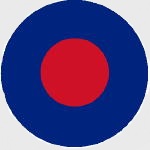Corgi AA39002 Royal Navy Westland Lynx Mk.8 Helicopter - Fleet Air Arm 815 Naval Air Station, HMS Manchester, 2008 (1:72 Scale)
"Obsolete weapons do not deter."
- British Prime Minister Margaret Thatcher
 The Westland Lynx is a British helicopter designed by and built Westland Helicopters at its factory in Yeovil. Originally intended as a utility craft for both civil and naval usage, military interest led to the development of both battlefield and naval variants, which went into operational usage in 1977 and were later adopted by the armed forces of over a dozen nations, where it primarily serves in the battlefield utility, search and rescue and anti-submarine warfare roles. The helicopter is now produced and marketed by AgustaWestland.
The Westland Lynx is a British helicopter designed by and built Westland Helicopters at its factory in Yeovil. Originally intended as a utility craft for both civil and naval usage, military interest led to the development of both battlefield and naval variants, which went into operational usage in 1977 and were later adopted by the armed forces of over a dozen nations, where it primarily serves in the battlefield utility, search and rescue and anti-submarine warfare roles. The helicopter is now produced and marketed by AgustaWestland.
The initial design (then known as the Westland WG.13) was started in the mid-1960s as a replacement for the Westland Scout and Wasp, and a more advanced alternative to the UH-1 Iroquois. As part of the Anglo-French helicopter agreement signed in February 1967, the French company Aerospatiale were given a work share in the manufacturing programme. Aerospatiale received 30% of production with Westland performing the remainder. It was intended that France would buy Lynxes for its Navy and as an armed reconnaissance helicopter for the French Army, with Britain buying Aerospatiale Gazelles and Pumas for its armed forces. The French Army cancelled its requirement for Lynxes in October 1969.
The Lynx design used many components derived from the Scout and Wasp. However, the rotor was new, being of a semi-rigid design with honeycomb sandwich blades. The first Lynx prototype took its maiden flight on March 21st, 1971.
In 1972, a Lynx broke the world record over 15 and 25 km by flying at 321.74 km/h (199.92 mph). It also set a new 100 km closed circuit record shortly afterwards, flying at 318.504 km/h (197.91 mph). In 1986, a Lynx specially modified with BERP (British Experimental Rotor Programme) rotor blades, registered G-LYNX and piloted by Trevor Egginton set an absolute speed record for helicopters over a 15 and 25 km course by reaching 400.87 km/h (249.09 mph).
Over 100 Lynxes were ordered by the British Army as Lynx AH (Army Helicopter) Mk.1 for different roles, such as transport, armed escort, anti-tank warfare (with eight TOW missiles), reconnaissance and evacuation. The Army has fitted a Marconi Elliot AFCS system onto the Lynx for automatic stabilisation on three axis. Deliveries of production Lynxes began in 1977.
Pictured here is a 1:72 scale replica of a Royal Navy Westland Lynx Mk.8 helicopter that is assigned to the Fleet Air Arm 815 Naval Air Station, HMS Manchester, during 2008.
Sold Out!
Dimensions:
Rotor Span: 6-1/2-inches
Length: 7-inches
Release Date: August 2010
Historical Account: "In the Navy" - 815 Naval Air Squadron is a Squadron of the Fleet Air Arm, part of the Royal Navy. The Squadron is currently based at RNAS Yeovilton in Somerset, United Kingdom and it is the Navy's front line Lynx Naval Air Squadron. It currently comprises more than 30 Lynx helicopters of various types. It is the largest helicopter squadron in western Europe.
The Squadron initially formed at RNAS Worthy Down in September 1939 with Fairey Swordfish aircraft. The Squadron gained early notoriety with its involvement in the Battle of Taranto in 1940. The battle consisted of a raid on the Italian Battlefleet in harbour at Taranto which redefined the use of air power from the sea. During the battle only one Squadron aircraft was lost compared to the crippling of half the Italian Fleet. In March 1941, the Squadron was once again involved in a major battle of the Second World War at the Battle of Cape Matapan; a battle that ensured the Italian Fleet did not leave harbour until the end of the war. The Squadron re-equipped in August 1941 with a mixture of Swordfish and Fairey Albacore, operating from shore bases in support of the North African campaign.
It was disbanded in July 1943 but reformed at Lee-on-Solent to operate Fairey Barracuda torpedo bombers, operating from Indomitable with the Eastern Fleet, flying airstrikes over Sumatra in August–September 1944. It disbanded once again in November 1944 before reforming in December 1944 at RAF Machrihanish flying Barracudas for anti-submarine operations.
The squadron was disbanded again in 1966. In 1981, after a gap of 15 years, the squadron re-commissioned at RNAS Yeovilton with the Lynx HAS Mk2 as the Headquarters Squadron for embarked Lynx Flights. It saw action during the Falklands War of 1982. The flights were shared with 829 Naval Air Squadron until they were amalgamated in 1993 when they became the largest helicopter Squadron in the world.









